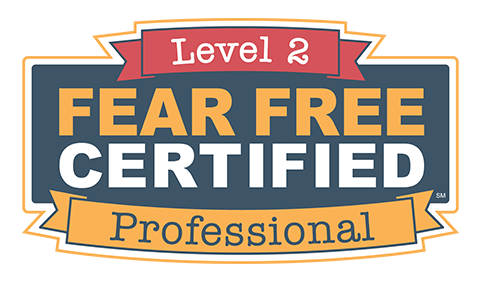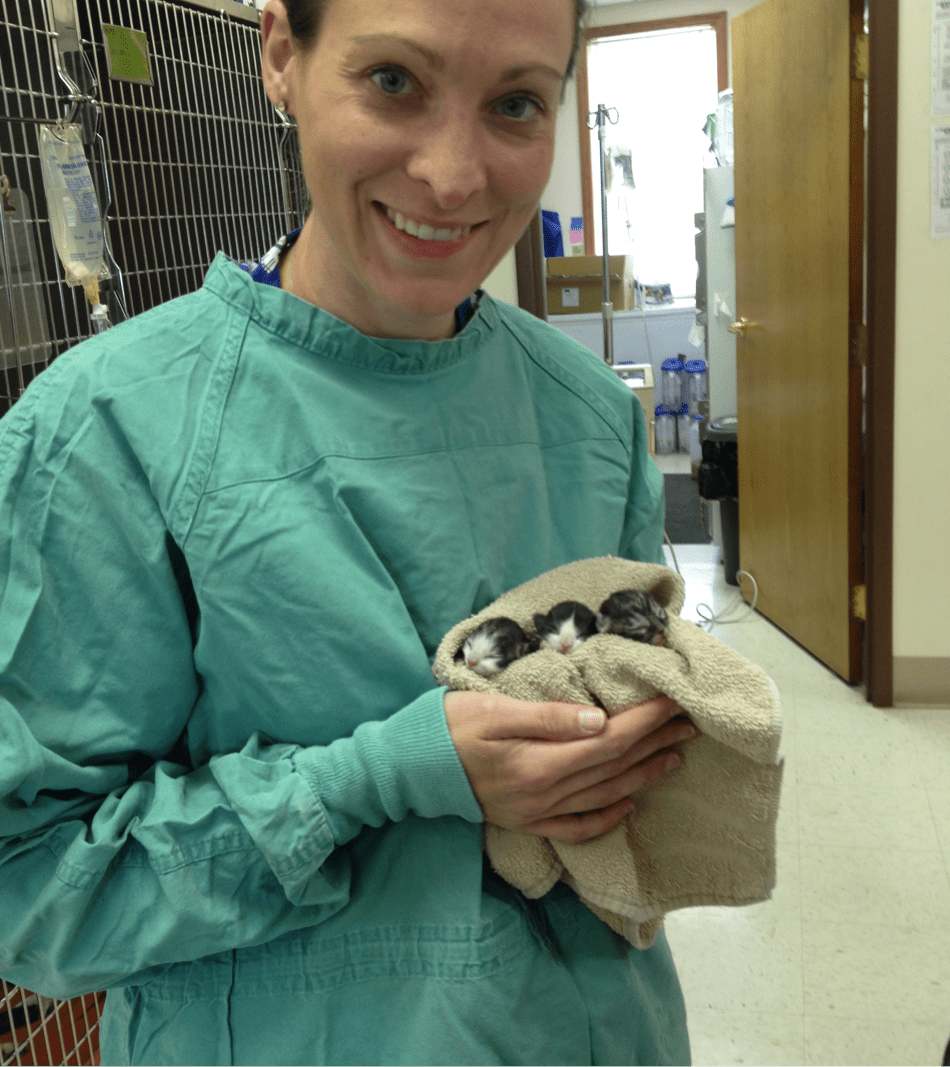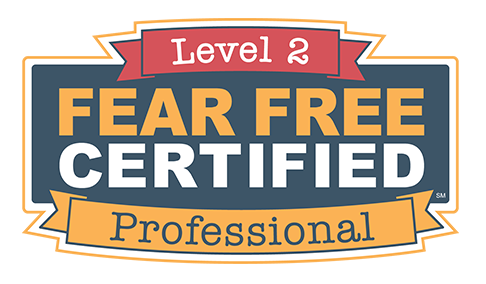My first job in veterinary medicine was as an assistant. In the clinic, I worked at getting all the procedures the pet came in for was the priority. I remember one time an owner asked us to trim his 160lb Mastiff’s nails. Didn’t think twice about it. This particular dog was pretty reactive and required a muzzle for the physical exam. So I put the muzzle back on, recruited four of my most skilled coworkers and we wrestled that beast to the ground and trimmed all the nails and then gave him back to the owner. Never thought about how terrible that experience was for the dog or for us as staff members. Another example of how not to treat a patient was a Cocker Spaniel that presented for severe ear infections. We are talking swollen ears, pus and blood draining from the ears, and all the associated fur matting you can imagine. The doctor instructed me to take the dog to the grooming area and shave all the mats and start cleaning the ears. His dog screamed, cried, and tried to bite. But we muzzled it and powered through because unless this was cleaned up the infection, it wasn’t going to get better. Super aggressive cat? Put the carrier on a stool and spin it until it was dizzy enough to get out of the carrier.
This is not to say the doctors I worked for were bad doctors, on the contrary. They were bright, caring, lovely people and I learned a lot from them. This was just how veterinary medicine was being done at the time. It’s really odd thinking back on it now, like I love you but let me just sit on you while you freak out to get this nail trim done….doh! This is definitely a face palm moment.
I got into vet school and starting talking to doctors that only specialized in animal behavior. They opened the door to a base of knowledge that I didn’t even know was out there. Doctors studying what physically happens to a body when it is under that kind of stress. What are different ways we could handle patients to reduce stress? Using medication to reduce stress and offer sedation prior to doing procedures the PETS viewed as stressful. Just because a nail trim doesn’t hurt does not mean that the animal receiving the nail trim isn’t petrified! Just like some people are scared of elevators and others spiders….we don’t get to choose for someone/ something else what is scary.
I had the privilege of meeting and learning from Dr. Sophia Yin in 2012. She was a veterinarian who lived in

California and years prior had a really difficult Boxer that was reactive and acted aggressively. She was lost, sought the help of trainers one who instructed her to put a choke chain on the dogs and hold it up until it passed out. It was at this time, she knew there had to be a better way. She went back to school to learn all she could about animal behavior and learning. Then she went on to develop classes and tools to help the rest of the veterinary community. When I first signed up for her handling class, I thought I would be working with live animals, nope, stuffed animals. She told us if we could hold stuffed animals right we could hold live animals right- we trusted her. I learned more during that weekend about animal handling than I had the previous four years in school.
Now all of the cases I described would have been handled much differently. That Mastiff – I would have been referred to a trainer for desensitization and counterconditioning. The owners would have been instructed to train him to wear a muzzle and he would have had medication prior to coming into the office to reduce is stress. The Cocker Spaniel – full sedation! I cannot fathom the pain I must have caused that poor dog. The aggressive cat would have been given mediation at home to allow handling.
I am a forever student. I hope to always be open to learning new things even if it challenges or contradicts what I have done in my past. The more I know the better I can do. I owe a lot of what I have learned to passionate and caring veterinarians that came before me. I hope that I can inspire young people in veterinary medicine the same way.

 Barks & Recreation is proud to feature Dr. Eileen Savier CVA, CVCH as our Veterinary Blogger in our “From the Vet” Series — offering information related to the health and welfare of your furry family members! Currently part of the team of doctors at Keystone Veterinary Clinic, Dr. Savier is a 2012 Graduate of the Ross University School of Veterinary Medicine, She completed her clinical experience at The Ohio State University and after veterinary school she pursued further education and certification in Veterinary Acupuncture, Chinese Herbal Medicine, and Fear Free veterinary visits. Dr. Savier has a special interest in integrative medicine, animal behavior, and internal medicine and is committed to improving animal health care by integrating Eastern and Western philosophies. She enjoys working with fearful & aggressive dogs and cats and she has had additional training in low stress handling techniques and encourages positive reinforcement during exams and procedures. Her clinical interests include pain management, animal behavior, geriatric patient care, and internal medicine.
Barks & Recreation is proud to feature Dr. Eileen Savier CVA, CVCH as our Veterinary Blogger in our “From the Vet” Series — offering information related to the health and welfare of your furry family members! Currently part of the team of doctors at Keystone Veterinary Clinic, Dr. Savier is a 2012 Graduate of the Ross University School of Veterinary Medicine, She completed her clinical experience at The Ohio State University and after veterinary school she pursued further education and certification in Veterinary Acupuncture, Chinese Herbal Medicine, and Fear Free veterinary visits. Dr. Savier has a special interest in integrative medicine, animal behavior, and internal medicine and is committed to improving animal health care by integrating Eastern and Western philosophies. She enjoys working with fearful & aggressive dogs and cats and she has had additional training in low stress handling techniques and encourages positive reinforcement during exams and procedures. Her clinical interests include pain management, animal behavior, geriatric patient care, and internal medicine. Dr. Savier shares her home with two (soon to be three) dogs, two cats, and a toddler. She lovingly refers to her two dogs as Coconut Retrievers as they were rescue dogs she brought home from the island of St. Kitts. In her free time she enjoys spending time with her family, going to the beach, and planning her next Disney vacation.
Dr. Savier shares her home with two (soon to be three) dogs, two cats, and a toddler. She lovingly refers to her two dogs as Coconut Retrievers as they were rescue dogs she brought home from the island of St. Kitts. In her free time she enjoys spending time with her family, going to the beach, and planning her next Disney vacation.




